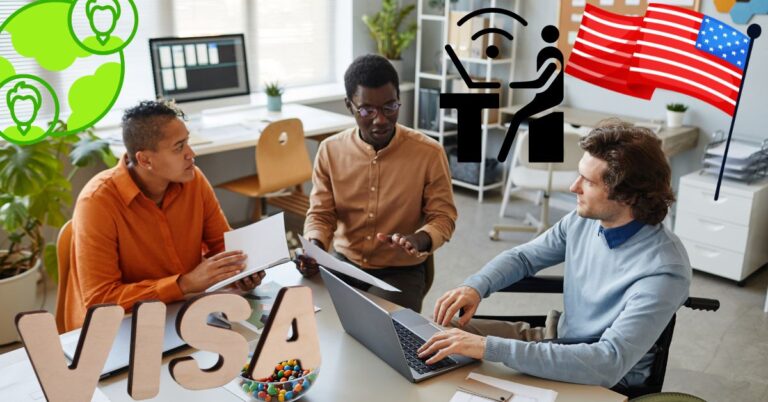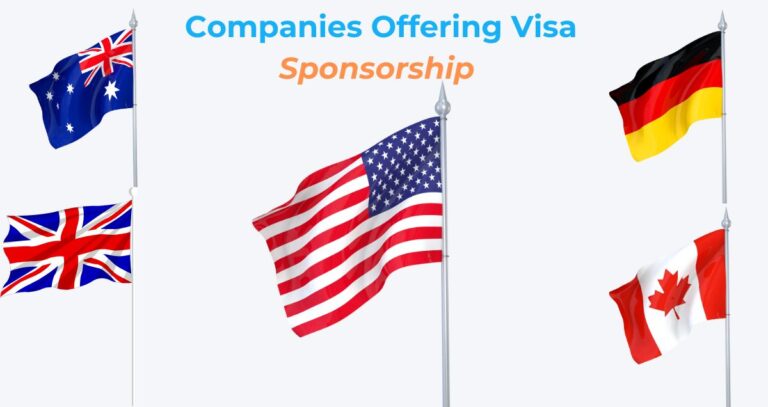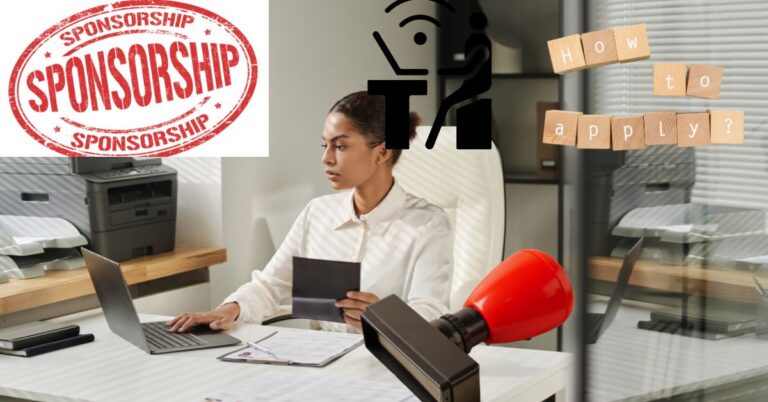Securing a job with visa sponsorship in the USA isn’t just a goal; it’s a life-changing opportunity for many international job seekers. The promise of working in a country known for innovation, diversity, and career growth is a dream worth chasing. But navigating the complex landscape of U.S. work visas, employer requirements, and competitive job markets can feel overwhelming.
This guide is here to simplify the process for you. By following these step-by-step strategies and insider tips, you’ll learn how to maximize your chances of landing a job with visa sponsorship. From understanding the types of visas available to crafting a winning application, this comprehensive roadmap will equip you with everything you need to succeed.
The journey starts with knowledge—and that’s why understanding visa types and employer expectations is crucial. Employers look for candidates who can bring unique value to their businesses while aligning with visa requirements. For job seekers, knowing which industries and companies are most likely to sponsor visas can save time and effort.
Whether you’re a tech professional aiming for an H-1B visa, an entrepreneur exploring E-2 options, or a recent graduate planning to transition through OPT or CPT, this guide will provide actionable advice tailored to your situation.
Understanding Visa Sponsorship
Visa sponsorship occurs when an employer agrees to hire a foreign worker and supports their visa application. This is often necessary for international professionals who need legal authorization to work in the United States. For employers, it provides access to global talent, while for employees, it’s a pathway to achieving career goals in the U.S.
Visa sponsorship offers mutual benefits. Employers gain skilled workers in fields where there may be shortages, and employees secure work authorization and valuable experience in one of the world’s leading economies.
Types of U.S. Work Visas with Sponsorship
Understanding the different types of U.S. work visas is crucial to finding the right fit for your qualifications and career goals. Here are the most common options:
- H-1B Visa: For professionals with specialized skills, especially in fields like technology, healthcare, and engineering.
- L-1 Visa: Designed for employees transferring within the same company to a U.S. branch.
- O-1 Visa: For individuals with extraordinary abilities in sciences, arts, education, or athletics.
- EB-3 Visa: Available to skilled, unskilled, and professional workers.
- Other Options: TN visas for Canadian and Mexican nationals, J-1 visas for internships and exchange programs, and E-2 visas for entrepreneurs.
Industries That Frequently Sponsor Visas
Certain industries in the U.S. are more inclined to sponsor work visas due to high demand for talent. Common sectors include:
- Technology and software development.
- Healthcare and medical services.
- Engineering and construction.
- Education and academia.
Top U.S. Employers Known for Sponsorship
Companies with a proven history of sponsoring work visas include major names like Google, Microsoft, Amazon, and Deloitte. Platforms like MyVisaJobs, LinkedIn, and Glassdoor are excellent tools to identify employers with a record of hiring international talent.
Keyword Tips for Job Search
To optimize your job search, use targeted keywords such as:
- “H-1B visa jobs USA.”
- “USA work visa sponsorship.”
- “Jobs in the USA for foreigners.”
These keywords can help you locate positions tailored to your needs.
Preparing a Winning Job Application
Crafting a Targeted Resume
Your resume should highlight your international experience and the skills most in demand in the U.S. Include relevant terms like “H-1B visa experience” to catch recruiters’ attention.
Writing a Strong Cover Letter
A compelling cover letter should address the employer’s requirements and explain how your unique skills meet their needs. Clearly state your willingness to work under visa sponsorship and emphasize the value you bring to the organization.
Building a Professional Online Presence
Optimize your LinkedIn profile to reflect your expertise and include keywords such as “USA visa sponsorship jobs” or “employment-based green card.” Engage in forums and communities dedicated to visa sponsorship opportunities to expand your visibility.
Networking to Open Doors
Connecting Online
Social media platforms like LinkedIn, Facebook, and Reddit offer groups focused on visa sponsorship jobs. Building connections with HR professionals and hiring managers increases your chances of landing opportunities.
Attending Career Fairs and Industry Events
Both virtual and in-person events offer direct access to employers open to hiring international professionals. Prepare an elevator pitch and have your documents ready for submission.
Reaching Out to Alumni Networks
Alumni connections can provide valuable job leads, especially if they work in companies known for offering visa sponsorship.
The Visa Application Process
Employer Responsibilities
Employers sponsoring a visa must file a petition and provide proof that the candidate is uniquely qualified for the position. This includes submitting forms like the Labor Condition Application (LCA) for H-1B visas.
Your Role in the Process
As the candidate, you’ll need to ensure all required documents, such as passports, certifications, and diplomas, are in order. Familiarize yourself with the specific forms and deadlines for your visa type to avoid delays.
Tips to Avoid Common Mistakes
Errors in documentation or missing deadlines can result in setbacks. Double-check your applications and follow up with your employer to ensure everything is on track.
READ MORE: UK Visa Sponsorship Jobs For Unskilled Workers: Opportunities For African Job Seekers
Strategies for Increasing Your Chances
1. Upskilling for Competitive Roles: Certifications in fields like data analytics, AI, or healthcare can significantly improve your employability. Employers often look for candidates with expertise in high-demand areas.
2. Applying to Less Competitive Regions: While major cities are popular among job seekers, targeting smaller states or less saturated markets may increase your odds of finding employers open to sponsorship.
3. Building Employer Confidence: Offering to cover a portion of sponsorship-related costs, when feasible, can make you a more attractive candidate.
Alternatives to Traditional Visa Sponsorship
1. OPT and CPT for Students: Students on F-1 visas can utilize Optional Practical Training (OPT) and Curricular Practical Training (CPT) to gain work experience before transitioning to a work visa.
2. Investor and Self-Employment Options: The E-2 visa allows entrepreneurs to invest in and operate businesses in the U.S., offering an alternative route for those willing to start their own ventures.
3. Family-Sponsored Work Opportunities: If you have family members who are U.S. citizens or permanent residents, they may help facilitate work sponsorship options through family-based petitions.
FAQs
How do I find out if a company sponsors visas?
Research using tools like MyVisaJobs and company websites to identify sponsorship-friendly employers.
What are the costs involved in the process?
Costs vary by visa type, but employers often cover significant portions of the fees.
Can I switch employers after getting sponsored?
Yes, but it depends on the visa type and whether your new employer is willing to take over sponsorship responsibilities.





